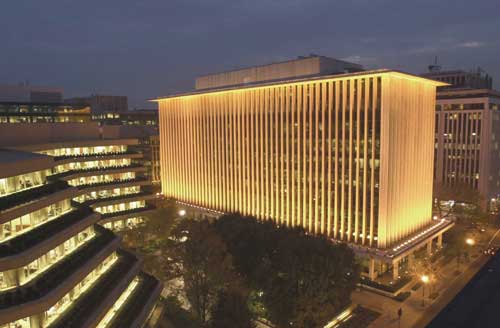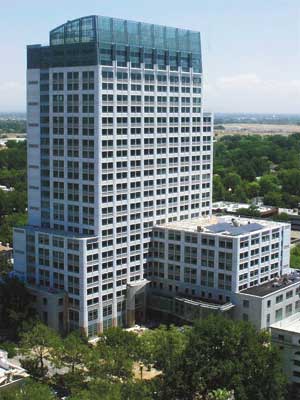LEED for Existing Buildings
Cost and Payback
Along with the amount of time required for certification, the cost of pursuing certification varies dramatically. "We're all over the charts on this one," says Hammond. In 2006 and 2007, the Leonardo Academy surveyed owners and managers of LEED-EB buildings and found an average total cost of $2.43 per square foot, from a sample size of 14 buildings. According to Craig, this investment "will pay for itself, and quickly-often in just a couple of years." He also says that he has yet to find an owner who regrets the decision to pursue LEED-EB. "It's pretty compelling even if you're not a tree-hugger."
 |
Based on a company-wide environmental sensibility, the National Geographic Society invested $7 million in their Washington, D.C., headquarters to become the first LEED-EB certified project in 2003 under the original pilot program. Photo © Mark Thiessen, National Geographic |
Â
A range of strategies can reduce the costs of LEED-EB. Owners of multiple buildings can benefit from simply applying the same strategies and policies campus-wide or from formally entering USGBC's Portfolio Program, which allows them to submit documentation just once for requirements, such as purchasing policies, that are consistent among all of their buildings. Property-management giant CB Richard Ellis is currently using this approach to certify more than 100 buildings simultaneously.
 |
The EPA headquarters in Sacramento, California, was the first high-rise to earn LEED-EB Platinum certification, and is considered by many to be one of the most energy efficient and environmentally sound buildings in America. Photo courtesy California EPA |
Many outside funding programs support water- and energy-efficiency improvements for existing buildings. The State of Colorado is funding several LEED-EB certifications through a preexisting energy-performance contract with Chevron Energy Services. The $20-million contract, which covers 20 buildings, began in 2003 and extends for 19 years. "We had a sufficient flow of savings to fund the certification process," says Chevron's Matt Rush, who considers LEED-EB "a no-brainer."
Baker says that Armstrong's LEED-EB process cost about $135,000, and that he expects the certification to pay for itself within three years. The savings are mostly in reduced energy and water use, but increased recycling rates are also saving about $20,000 per year in avoided tipping fees. Adobe spent $1.4 million on upgrades for its LEED-EB rating. The project received $400,000 in utility rebates, however, bringing the out-of-pocket cost to $1.0 million, and the improvements are reaping a payback of $1.2 million each year.
Payback can also come in other forms. For certain projects, the benefits include better loan terms and higher tenant lease rates. Managers of existing properties in competitive rental markets find LEED-EB certification valuable to prevent their office space from being viewed less favorably than new LEED-certified buildings coming onto the market. Good press can boost sales, and improved indoor-air quality can increase productivity. A LEED-EB rating can also energize the staff. At Armstrong, the LEED process "generated a lot of pride and purpose in facilities management-often an unappreciated division," says Craig. Laque says that this sense of accomplishment spread throughout Discovery's staff-in large part because the company charged the communications department with branding the project internally and encouraged staff input in the process. "It's not just the facilities department that got a Platinum rating," he says. "The whole company got a Platinum rating."








